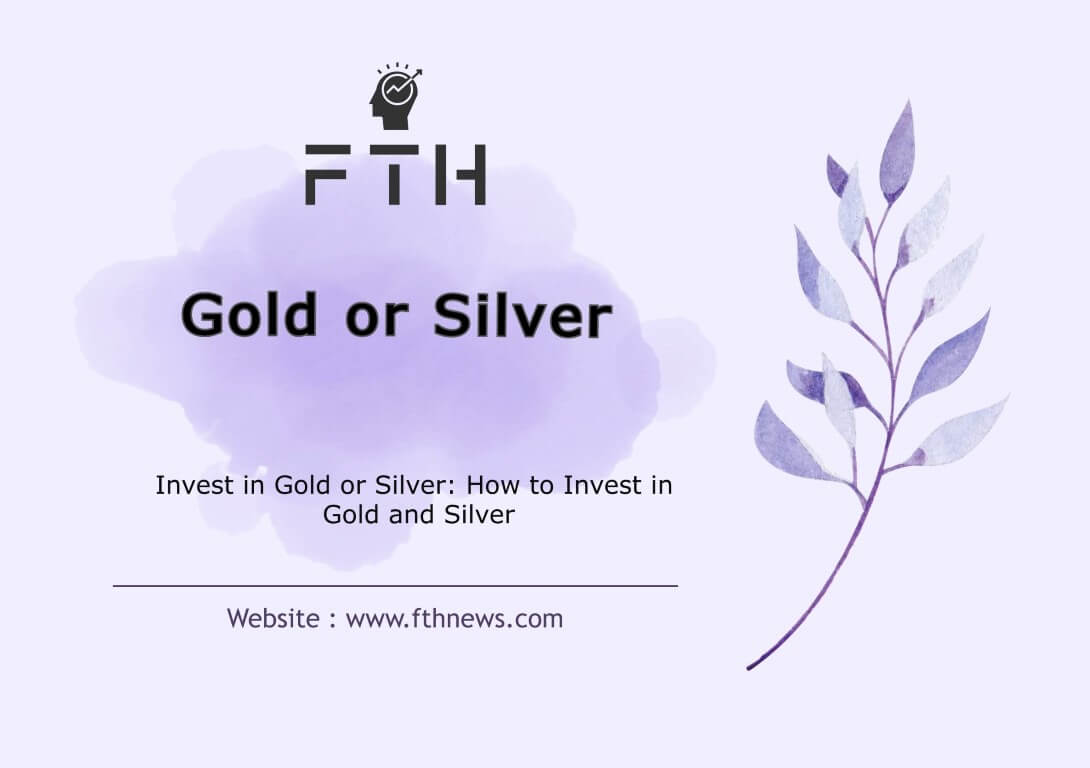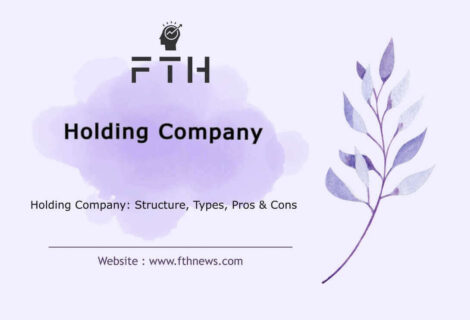
Invest in Gold or Silver: How to Invest in Gold and Silver
Invest in Gold or Silver have been cherished for centuries as investment options, offering individuals a means to preserve value and hedge against inflation. In this article, we’ll delve into the advantages and disadvantages of investing in gold and silver, helping you make an informed decision based on your financial goals and market understanding.
Things to Know About Invest in Gold or Silver:
Examining historical data since 1925 reveals a notable performance difference between gold and silver over extended periods. At the end of 1925, an ounce of gold was valued at $20.63, and by the close of 2020, it reached an impressive $18,993.66. Conversely, an ounce of silver, priced at $0.68 in 1925, only saw an increase to $17.14 by the end of 2020. It’s imperative to acknowledge that these apparent returns might be mitigated by the impact of inflation.
Inflation Protection:
Gold has long been celebrated for its exceptional ability to safeguard investments against the erosive effects of inflation, positioning itself as a reliable safe haven during times of economic uncertainty. Silver, while exhibiting a correlation with inflation, lacks the clear-cut reputation of gold, resulting in relatively weaker demand during such economic fluctuations.
Speculative Uses:
Diverging in their fundamental purposes, gold primarily functions as a haven for investors seeking wealth preservation, while silver finds its demand rooted in industrial applications. Gold’s higher price per ounce renders it a robust and stable store of value, appealing to those prioritizing security. Conversely, the lower price of silver not only makes it accessible to investors with modest balances but also positions it as a critical asset in industries such as electronics and solar cells.
Volatility:
Silver, due to its lower liquidity in the financial market, tends to exhibit heightened volatility, particularly in the short term. This fluctuating nature, while potentially offering opportunities for gains, necessitates a cautious approach from investors, urging them to carefully manage the associated risks. The increased volatility in silver underscores the importance of a strategic and informed investment approach, aligning with an investor’s risk tolerance and financial objectives.
When to Invest in Gold:
By understanding the unique dynamics and strategic factors surrounding each metal, investors can make more informed decisions, aligning their precious metal investments with their specific financial goals and the prevailing market conditions
Diversification Amid Economic Uncertainty:
Gold stands out as a reliable diversification tool during periods of economic uncertainty. Its historical track record suggests that when traditional markets face turbulence, gold often acts as a stabilizing force in investment portfolios.
Historical Resilience During Recessions:
Gold has demonstrated a remarkable ability to retain or appreciate in value during economic recessions. Investors seeking a haven during economic downturns may find gold to be a strategic addition to their portfolios.
Strategic Timing Based on Seasonal Patterns:
Seasonal analysis offers investors an additional layer of strategy. Historically, late summer or early autumn has presented potential buying opportunities for gold. Understanding these patterns enables investors to make informed decisions aligned with market trends.
Uncertain Market Conditions:
Investing in gold becomes particularly relevant when market conditions are uncertain. Whether influenced by geopolitical tensions or global economic instability, gold tends to shine as a safe-haven asset in times of crisis.
When to Invest in Silver:
Silver becomes an attractive investment when strong demand predictions emerge. Its applications in electronics, solar panels, and emerging technologies contribute to its potential growth. Investors can capitalize on this by monitoring and reacting to forecasted increases in demand.
Riding the Wave of Industrial Applications:
Silver’s growth potential is closely tied to its expanding role in industrial applications. As an essential component in electronics, mobile phones, and water purification systems, silver’s demand is expected to rise. Furthermore, its status as the most conductive metal positions it favorably amid the growing trend towards electrification.
Dynamic Response to Economic Stability:
Silver tends to perform well during periods of economic stability and growth. As an industrial asset, silver’s demand is intricately linked to economic activities. Investors may find silver to be a dynamic investment choice, particularly when anticipating economic upturns.
Affordability and Accessibility:
Silver’s lower price per ounce compared to gold makes it accessible to a broader range of investors. Individuals with smaller balances can consider silver as a means to enter the precious metals market, leveraging its affordability.
When to Approach Gold Investments with Caution:
By understanding the nuanced risks associated with both Invest in Gold or Silver, investors can make more informed decisions and tailor their investment strategies to align with their risk tolerance, financial goals, and the broader economic landscape.
Lower Long-Term Returns Compared to Stocks:
While gold has historically proven to be a stable store of value, its long-term returns are generally lower when compared to the potential gains offered by stocks. Investors seeking substantial profits may find that gold’s primary strength lies in hedging against inflation and providing portfolio stability rather than delivering high returns.
Limited Portfolio Allocation (5-10%):
Investors should exercise caution when considering gold as a significant portion of their portfolio. Financial experts commonly recommend allocating only a small portion, typically between 5-10%, to commodities like gold. This measured approach acknowledges gold’s role as a risk mitigator rather than a primary driver of portfolio growth.
When to Approach Silver Investments with Caution:
Silver is known for its increased volatility, especially when compared to gold. This characteristic makes it a suitable investment for individuals with a higher risk tolerance. Investors should approach silver with caution, understanding that its price fluctuations can be more pronounced, requiring a strategic and vigilant investment approach.
Caution During Periods of Low Production Demand:
Silver’s price dynamics are closely tied to industrial demand. During periods of low production demand, such as economic downturns, silver may not perform as strongly. Investors should exercise caution and consider alternative investments during these phases, as silver’s value proposition is closely linked to its industrial applications.
Urgent Liquidity Needs Consideration:
Individuals considering silver investments should be mindful of the potential need for liquidity in the short term. Silver’s value can be subject to fluctuations, and during periods where urgently needing the invested funds is anticipated, purchasing physical silver may not be the most logical choice.
Industrial Transformation and Demand Shifts:
Investors should also keep an eye on the ongoing transformation in the industrial sector. If current trends persist, the demand for silver in industrial applications is likely to increase significantly. Therefore, silver’s performance could be influenced by shifts in industrial demand patterns.
Advantages and Disadvantages of Investing in Gold and Silver:
By understanding these nuances, investors can make informed decisions, leveraging the strengths and mitigating the weaknesses of both gold and silver in constructing a well-balanced and resilient investment portfolio.
Silver’s Sensitivity to the Global Economy:
Advantage:
- Industrial Significance: Silver’s extensive use in heavy industry and high technology, including smartphones, tablets, automobile electrical systems, and solar panels, makes it more economically sensitive. This positions silver as a dynamic asset, with its value closely tied to global economic shifts and advancements in technology.
Disadvantage:
- Vulnerability to Economic Changes: While silver’s sensitivity to the global economy can be an advantage, it also exposes it to heightened vulnerability during economic downturns. Investors should be mindful of this dynamic, as silver’s performance can be more influenced by economic fluctuations compared to gold.
Volatility Comparison:
Advantage:
- Opportunity for Higher Returns: Silver’s higher volatility, being two to three times greater than gold, presents opportunities for investors seeking potentially higher returns. The price swings in silver can create advantageous entry points for those willing to navigate the market strategically.
Disadvantage:
- Risk and Uncertainty: The increased volatility of silver demands a higher risk tolerance from investors. While it offers potential for greater returns, it also introduces a higher level of uncertainty, requiring careful risk management and a well-thought-out investment strategy.
Diversification Strength:
Advantage:
- Gold’s Robust Diversification: Gold is renowned for its role as a robust diversifier in investment portfolios. Its limited correlation with stocks, bonds, and other major asset classes positions it as an effective hedge against market volatility. Investors often turn to gold to enhance the overall stability of their portfolios.
Disadvantage:
- Silver’s Moderate Diversification: While silver serves as a diversification tool, its correlation with various asset classes is moderately weaker compared to gold. Investors should consider that silver’s diversification benefits may not be as pronounced as those offered by gold, especially during certain market conditions.
Current Affordability:
Advantage:
- Accessibility to Small Investors: Silver’s lower price per ounce compared to gold makes it more accessible to a broader range of investors. Individuals with smaller balances can consider silver as a viable option to enter the precious metals market, providing an affordable entry point.
Disadvantage:
- Potential Implications of Price Discrepancy: While silver’s affordability is advantageous for smaller investors, it may also imply lower perceived value compared to gold. Investors should carefully weigh the affordability factor against their specific investment goals and consider the potential impact of any price discrepancy.
How to Invest in Gold and Silver:
Physical Intake:
Advantages:
- Tangible Ownership: Purchasing physical gold and silver provides investors with tangible ownership of these precious metals. Holding coins or bars can offer a sense of security and a direct connection to your investment.
Considerations:
- Storage and Insurance: Investors should be aware of the associated costs, including storage fees and potential insurance expenses, when opting for physical intake. Third-party warehouses provide secure storage but may involve additional charges.
Exchange Traded Funds (ETFs):
Advantages:
- Convenience and Accessibility: ETFs offer a convenient and accessible way for investors to gain exposure to gold and silver without the need for physical storage. Shares can be bought and sold on stock exchanges, providing flexibility in trading.
Considerations:
- Expense Ratios: ETFs typically charge expense ratios for managing the fund. Investors should be mindful of these costs as they can impact overall returns.
Mining Stocks and Funds:
Advantages:
- Indirect Exposure to Metal Prices: Investing in mining stocks or funds provides indirect exposure to the price movements of gold and silver. Companies engaged in mining activities can benefit from rising metal prices, potentially leading to increased stock values.
Considerations:
- Industry Risks: Mining stocks are influenced by factors beyond metal prices, including operational risks, geopolitical events, and management decisions. Investors should conduct thorough research and understand the industry dynamics before investing.
Conclusion:
Investing in gold or silver is a strategic decision that necessitates a thorough understanding of your financial objectives, risk tolerance, and the prevailing market conditions. The choice between gold and silver often depends on your specific goals – whether you seek historical stability (gold) or wish to leverage industrial potential (silver).
Staying informed about market trends, economic indicators, and geopolitical events is crucial for making sound investment decisions. Seeking professional advice can provide valuable insights and guidance tailored to your unique circumstances.
In conclusion, the world of precious metal investments is dynamic and multifaceted. By staying vigilant, continuously educating yourself, and aligning your investment strategy with your goals, you can navigate the intricate landscape of gold and silver investments with confidence.
FAQ
Consider ETFs for easy exposure or physical assets for tangible ownership.
Depends on goals; gold for stability, silver for industrial potential.
Yes, as a hedge against inflation and market uncertainties.
Depends on strategy; gold for stability, silver for versatility.
Start with research, consider ETFs, or consult a financial advisor.














